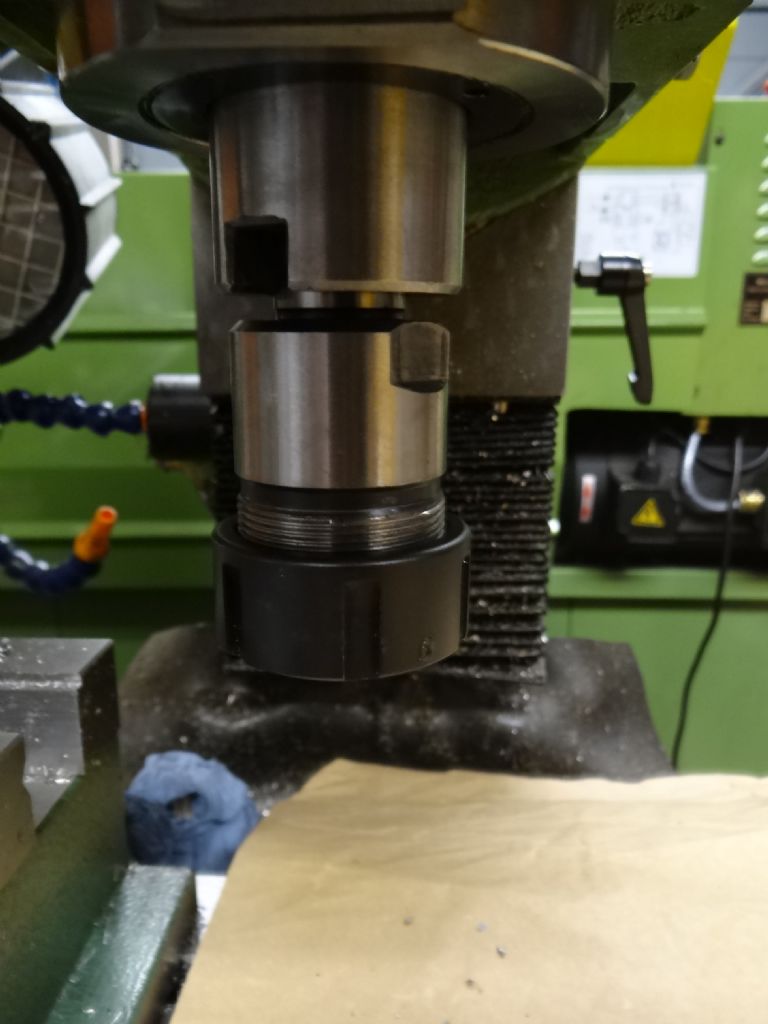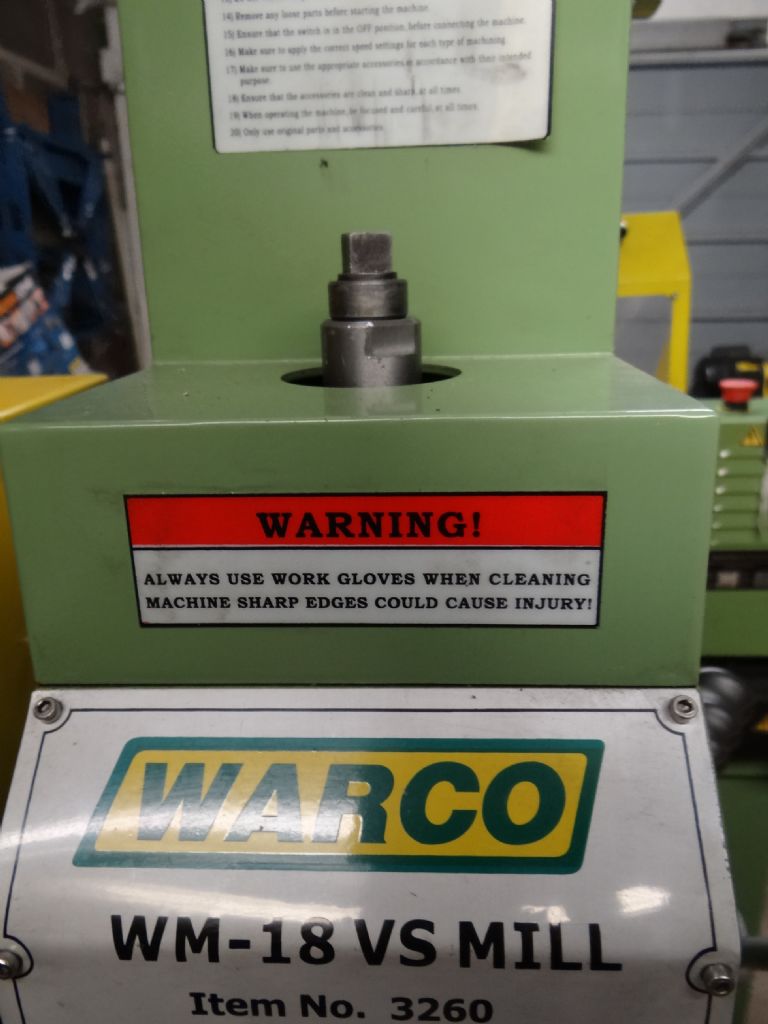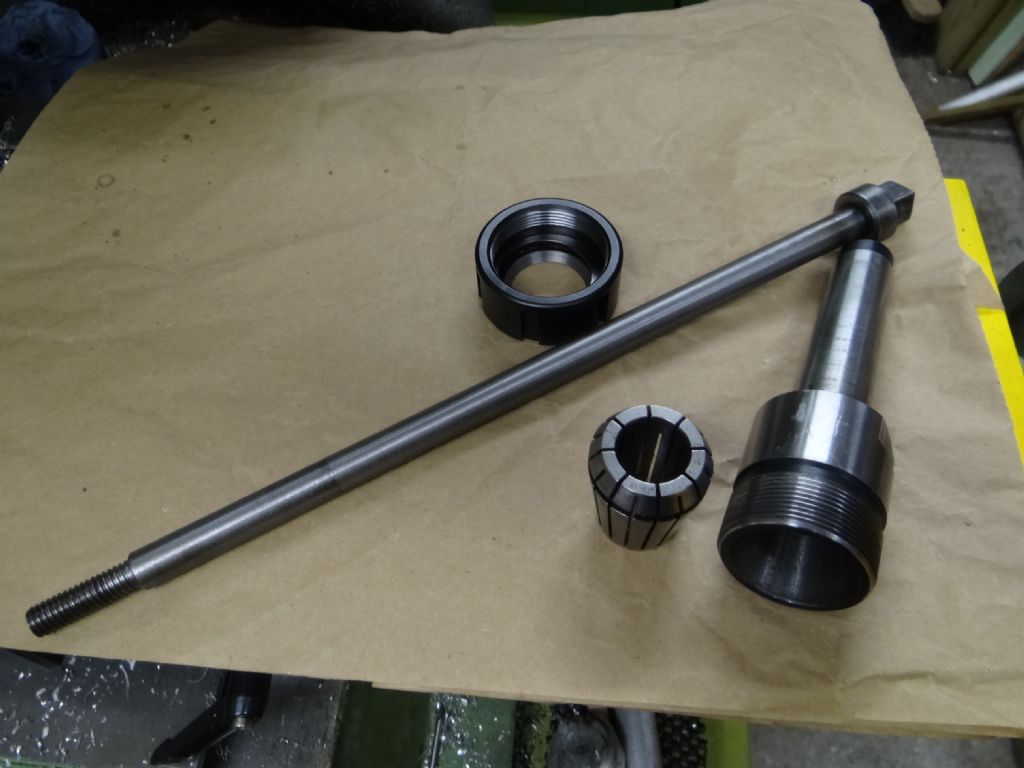" Thinking of space(lack of) I suspect for reasons I don't yet know a milling machine dosen't make a good drilling machine either? Perhaps they don't take Jacobs type chucks…. "
Ah, now, you CAN use a milling-machine as a precision drilling-machine; co-ordinates and all.
'
In fact a typical milling task may involve drilling and tapping several holes as well as squaring the outline to shape and size, cutting slots etc., all in one piece of metal.
No, they don't take Jacobs chucks directly in the spindle. Instead, the chuck fits onto a special adaptor with the Jacobs nose and an appropriate taper shank with internal draw-bar thread to fit the spindle; and it stays on the adaptor. You remove the adaptor from the mill, not drill-chuck from adaptor.
Just make sure you don't spoil the machine by drilling too deep and into the table!
'
Milling-machines generally don't have a chuck as such, like a drilling-machine. Instead the cutters, drill-chucks etc are held by interchangeable tooling that fits into one of various standard types of spindle taper. The two standards you and I are most likely to encounter are:
Morse (MT3 being perhaps the most common for model-engineering milling-machines).
R8. This was the standard on Bridgeport milling-machines once very common in the engineering trade, and on the Myford VMC mill. (The one I have)
You might encounter ISO – number; the modern industrial standard particularly suited to high-performance CNC machines. I don't know if any of the model-engineering trade machines use them: some of the larger, latest might.
New and second-hand Morse and R8 tooling is quite easy to find. The advantage of R8 is that the taper is steeper than Morse, so much less likely to jam in the spindle; but Morse tapers means some tooling is interchangeable with other machines, like most small lathes.
'
You can also add to milling-machines, accessories like vices designed for that task, rotary tables for cutting arcs and drilling accurately-spaced rings of holes, and angle-plates which at their simplest hold a work-piece on its side.
On-line catalogues like those of Arc Eurotrade have photos of milling- (and other) machine tooling, as examples.
Chris V.







